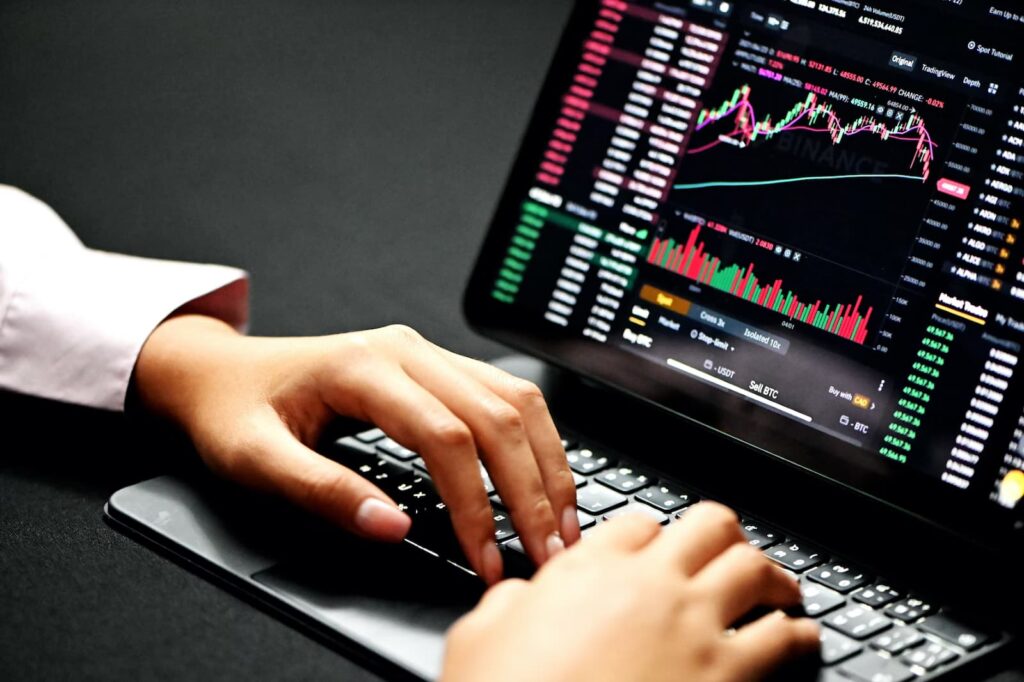Liquidity pools are an important part of the cryptocurrency ecosystem, providing a way for users to trade digital assets in a more efficient and secure manner. A liquidity pool is simply a collection of digital assets that are held in a central location and can be traded by users on a decentralized exchange.
How Do Liquidity Pools Work?
Liquidity pools work by allowing users to trade digital assets in a more efficient and secure manner. When you place an order to buy or sell an asset on a decentralized exchange, your order is matched with another user’s order. This match is called a trade.
If you’re buying an asset, you’re said to be the taker, and the person selling the asset is the maker. The terms come from traditional stock market trading, where the taker is the one who pays the market price for the stock, and the maker is the one who sets the price.
In a liquidity pool, there are usually two types of orders: limit orders and market orders. Limit orders allow you to set the price you’re willing to buy or sell an asset at, while market orders will execute your trade at the best available price.
The benefits of using a decentralized exchange
– Reduced counterparty risk: When you use a centralized exchange, you’re trusting that the exchange will not only keep your funds safe but also allow you to withdraw them when you want to. By contrast, when you use a decentralized exchange, you’re trusting only the code and not any particular entity.
– Greater security: Decentralized exchanges are often built on top of blockchain technology, which offers a high degree of security.
– Increased privacy: Some decentralized exchanges don’t require you to create an account, which means your transactions are more private.
– Reduced fees: Decentralized exchanges don’t have the same overhead costs as centralized ones, so they can often offer lower fees.
The risks of using a decentralized exchange
– Limited liquidity: Because decentralized exchanges are still new, they often have lower trading volumes than centralized ones. This can make it difficult to find buyers or sellers for certain assets and can lead to wider spreads.
– New technology: Decentralized exchanges are built on cutting-edge technology, which means there’s a greater risk that something could go wrong. If you’re not comfortable with new technology, you may want to stick to a more traditional exchange.
– Less user-friendly: Decentralized exchanges can be harder to use than centralized ones because they often have a more complex interface. This can make them intimidating for new users.

How to buy on a decentralized exchange
If you’re interested in buying on a decentralized exchange, there are a few things you need to know. Here’s a step-by-step guide:
1. Find an exchange: The first step is to find a decentralized exchange that supports the asset you want to buy. Not all exchanges list all assets, so it’s important to do your research before you commit to one.
2. Connect your wallet: Once you’ve found an exchange, you’ll need to connect your cryptocurrency wallet. It will allow you to store your coins and tokens in a safe place away from the exchange.
3. Find a seller: Once you’re connected to an exchange, you’ll need to find a seller who’s willing to trade the asset you want. Make sure to check the seller’s reputation before you commit to a trade.
4. Initiate the trade: Once you’ve found a seller, you can initiate the trade. Decentralized exchanges typically use an Ethereum smart contract to facilitate trades. This means that you’ll need to have some ETH in your wallet to pay for gas fees.
5. Wait for the trade to confirm: Once the trade is initiated, it will need to be confirmed by the decentralized exchange’s network. This can take a few minutes or more, depending on network conditions.
6. Withdraw your coins: Once the trade is confirmed, you can withdraw your coins or tokens to your personal wallet.
And that’s it! You’ve successfully traded on a decentralized exchange.
Decentralized exchanges have a lot of potential, but they’re not without their drawbacks. The biggest issue is that they’re still relatively new and have very low trading volumes compared to centralized exchanges. This can make it difficult to find buyers or sellers for certain assets, and can also lead to higher spreads (the difference between the buy and sell price).
Conclusion
Decentralized exchanges are a new and exciting way to trade cryptocurrency. They’re censorship-resistant, allow you to trade directly with other users, and don’t require you to create an account or hold your funds on the exchange.
However, they’re still relatively new and have low trading volumes compared to centralized exchanges. This can make it difficult to find buyers or sellers for certain assets, and can also lead to higher spreads (the difference between the buy and sell price).


